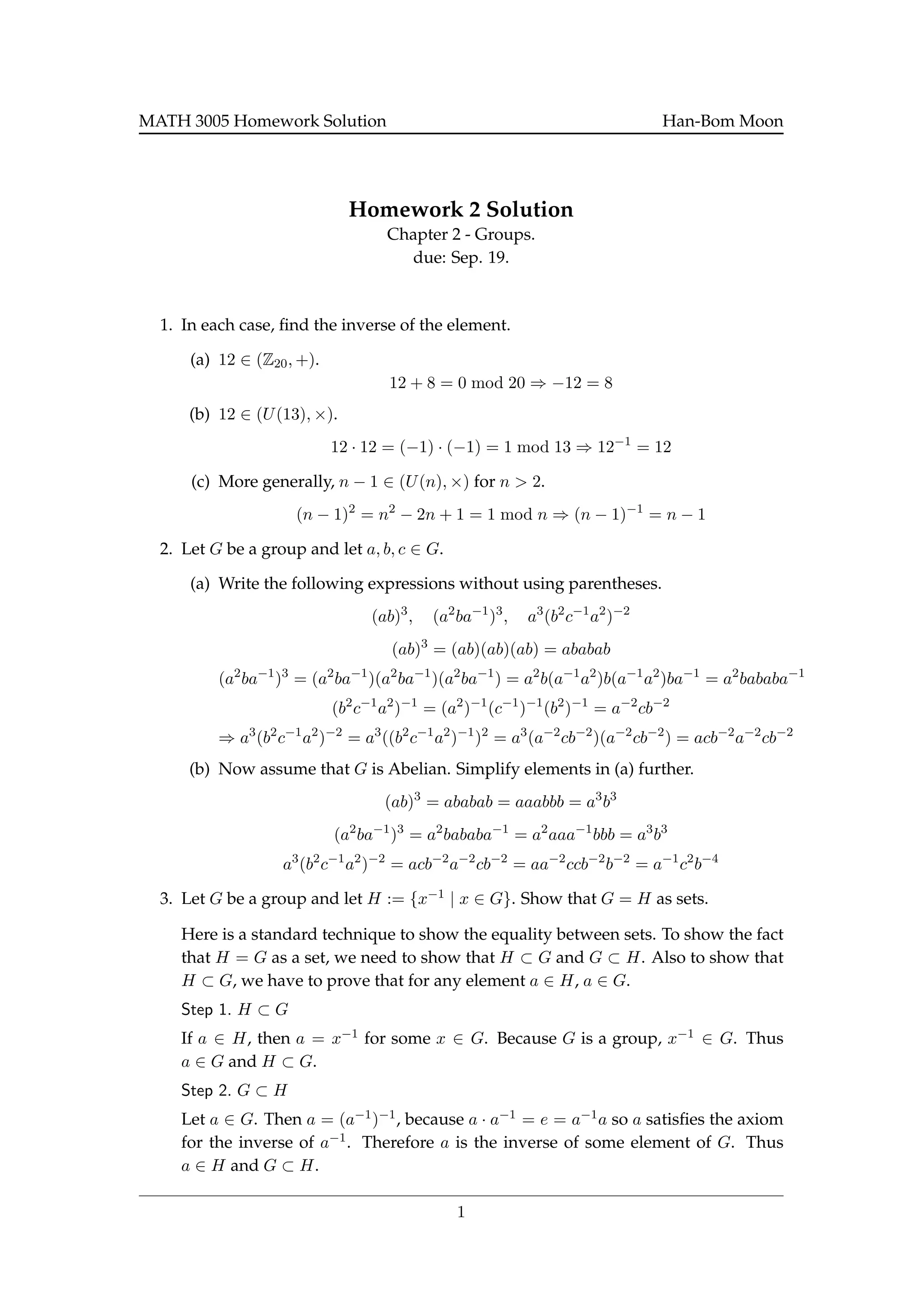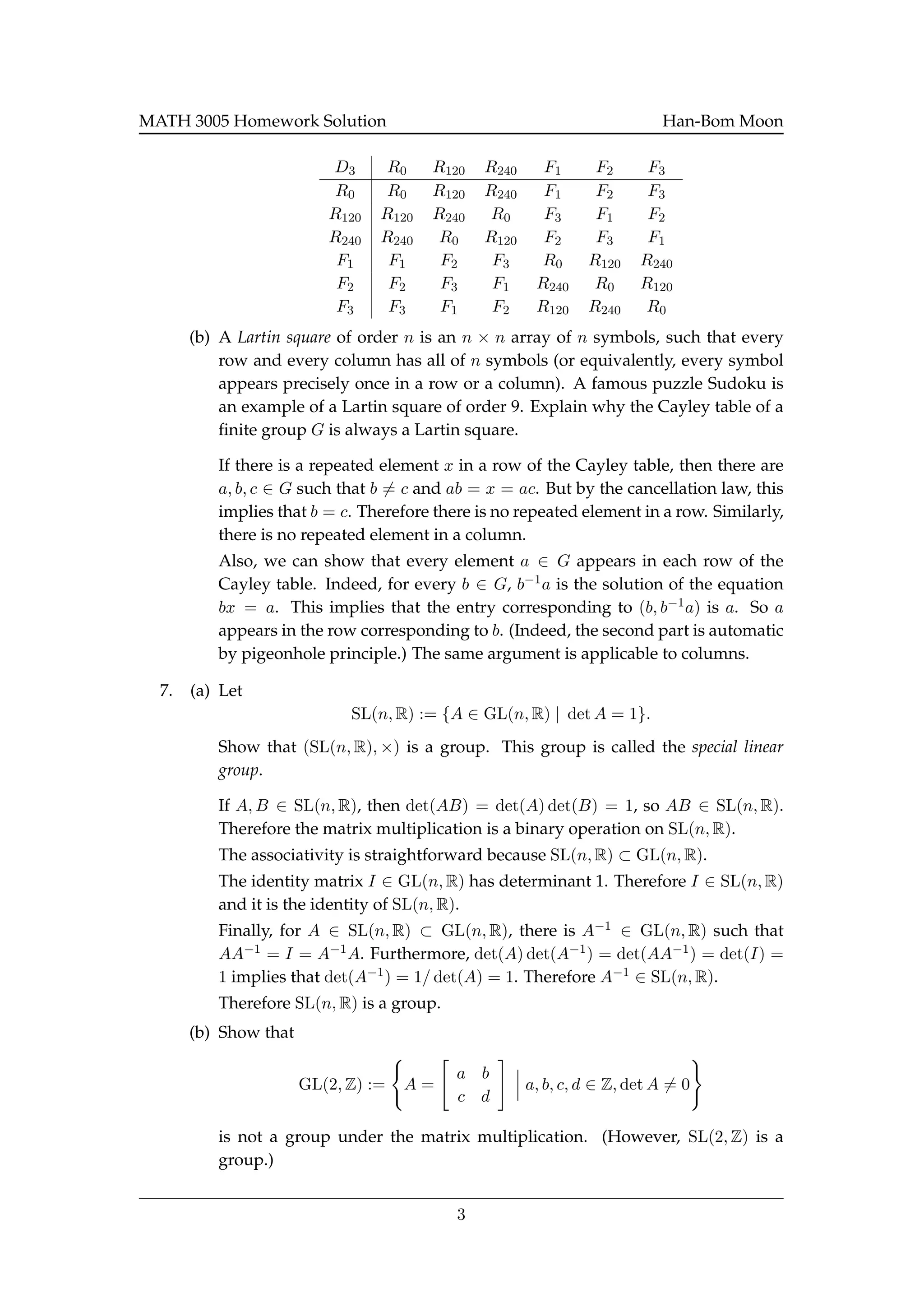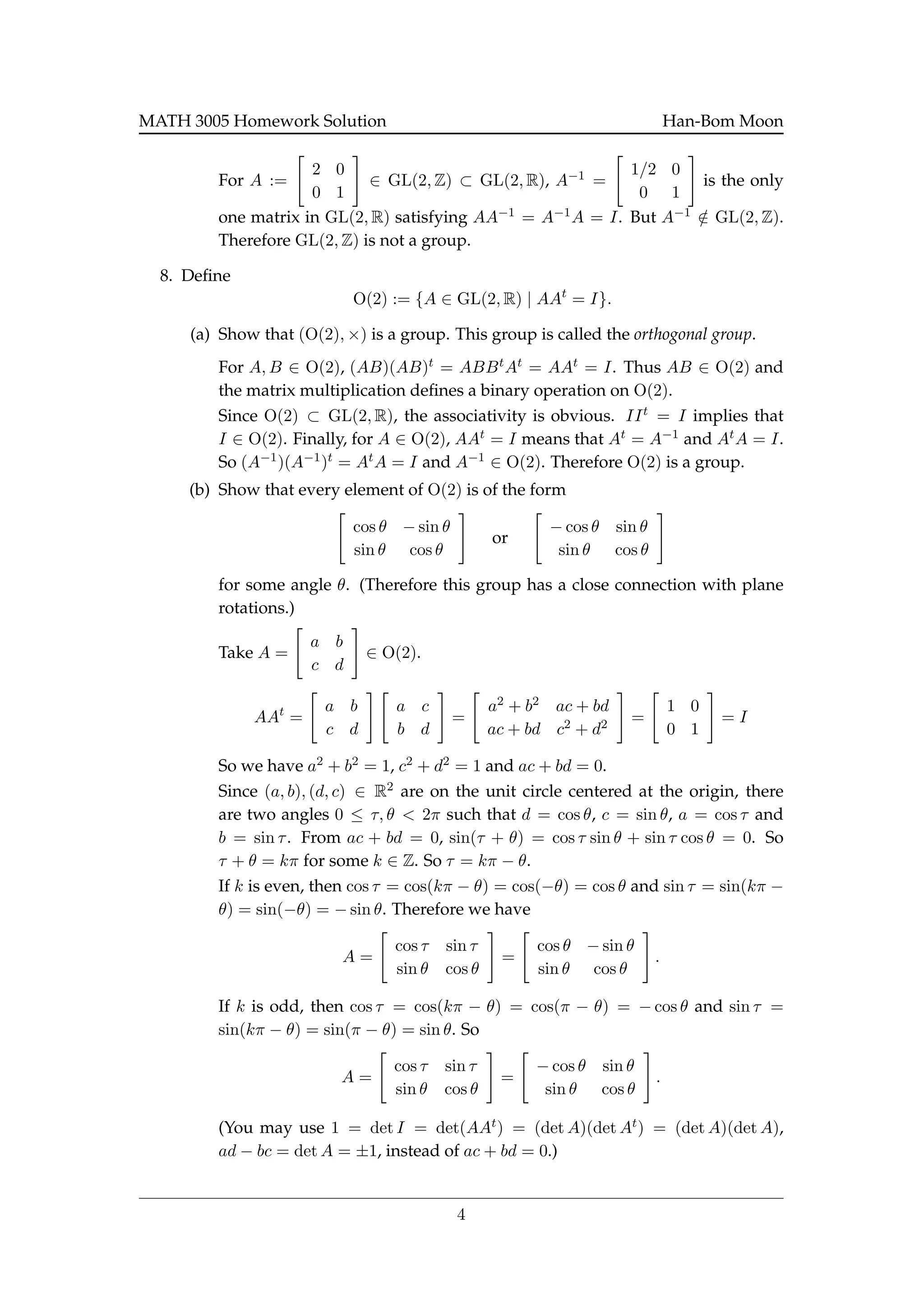This document contains the solutions to homework problems from a group theory course. It includes:
1) Finding inverses in groups of integers and units of rings.
2) Simplifying expressions in groups and showing a group is Abelian.
3) Proving properties of groups like every element is the inverse of another.
4) Examples of groups like the special linear group and orthogonal group.



